I used to make a clone image of my HDD about once a week. I run RAID 0 striped drives in my system for speed (old SATA II drives and system, so speed for me is 450MB/s in the buffered read test) so there’s no redundancy like you might have in a RAID 1 mirrored configuration. A couple of months ago my backup HDD went on the fritz and died and I kept putting off buying another, but don’t worry there’s no sad ending here. I finally picked one up this week, it’s a little Transcend StoreJet 1TB USB 3.0 “Military drop standards” hard drive from Amazon.
Of course, the first thing I did was take it apart and void the warranty on the Transcend unit (although the HDD has it’s own warranty), I wanted to see what was inside it. As it turns out, and it’s really not much of a surprise, there’s not a whole lot inside.
The outside as you has fairly thick rubber boot that goes around it.

This slides off from around the case and 3 screws secure the clamshell case.
The clamshell splits with a little work, there are a lot of plastic clips. You can see that the drive sits inside of another piece of rubber.
Here are the components of the case itself
Inside the we find a well cushioned Samsung Spinpoint (Seagate) ST1000LM024 hard drive made in June of 2014, really new, and a SATA to USB adapter board.
And the Samsung HDD and USB to SATA + Power adapter board separated
And finally here’s a close up view of the USB to SATA + Power adapter board
The speed is alright for an external, around 180MB/sec in the buffered read test. Below is my benchmark of my internal RAID 1 vs the external USB 3.0 single drive. The actual write speed is about 80 MB/sec while my RAID array write speed is around 160. If you’ve recently upgraded your computer you’re probably laughing at those numbers, but that’s alright!
Back to the point of this post though, backing up your really big hard drive seems like an insurmountable task. You certainly can’t burn everything to disc media, even a full capacity quadruple layer BD-XL Blu-Ray disc only stores 128GB. Tape is a possibility, but it’s REALLY slow. Storing ALL of your stuff on the Internet/Cloud could take forever, and depending on if the FCC lets Comcast and Time Warner merge, it could cost you thousands of dollars in bogus bandwidth charges because… fark you, that’s why.
For someone like me who has gigabytes upon gigabytes of video, pictures and thousands of files ranging everywhere from circuit board drawings to 3D rendered animation clips, etc, it’s just simpler to back up every single thing and if and when disaster happens, you can go back to it. This is, however, different from data archiving which is a different topic.
Acronis TrueImage Home is the best program I’ve found for making a full image of a Windows drive, not just an image, but a fully functional and bootable clone. Once set to clone mode under the utilities menu, and the source and destination drive is selected, it shuts down, restarts, clones the drive in about 2.5 hours and I’m good for another week.
While I do have some “very important to me stuff” but not particularly private stuff I keep on the internet, I also have personal work and other things that I just want to keep backed up for myself and things which are too large to store online conveniently. I also really hate re-installing my OS and all of my programs.
The great part about cloning your hard drive vs. just doing a normal HDD backup is that if your main hard drive ever crashes you can just plug in your backup drive, boot off that and continue like nothing happened. Once you get a replacement drive, just clone your backup drive over to the new one and continue.
With a basic backup or copy of files you will have to reinstall the operating system and all of your programs on a new hard drive and then copy all of your data back over to your new drive. The advantage of a backup is that when your system crashes and you are forced to re-install your OS, you are starting with a fresh install, so if your system was really slow and cluttered, this might be a real benefit. Hopefully you have all of your re-installation media and registration keys. With a cloned drive, you can always re-install Windows on a new drive, and just copy the data off of the cloned drive if you decide to go that way.
What media and software do you like to backup your system? I know the heavy *nix users like the dd command.

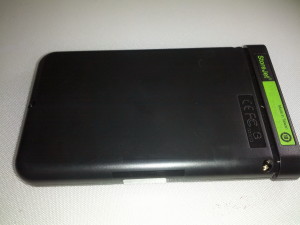
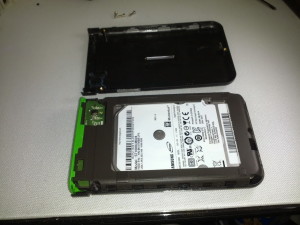
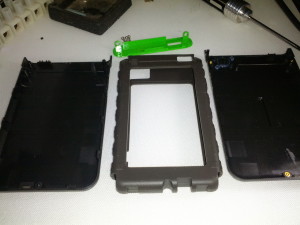
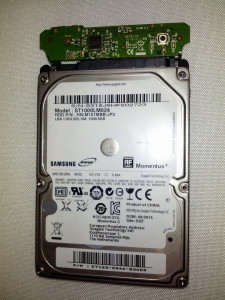
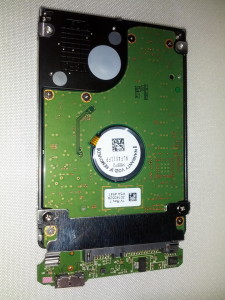
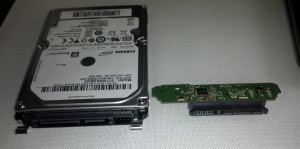
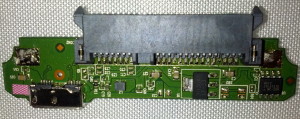
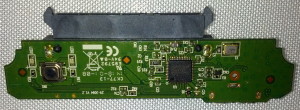
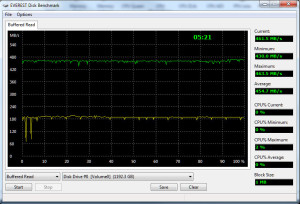
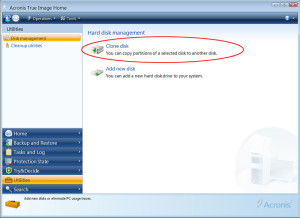
2 responses to Transcend StoreJet 1TB Teardown and Backing Up Your Large Hard Drives
i got a problem with my unit i baught 2 years ago, if i will order only the board of the disc drive, how much will it cause and where can i buy it
Please can the samsung HDD be used on a system directly! Or must be used with the SATA + Power adapter board?
Leave a reply to Transcend StoreJet 1TB Teardown and Backing Up Your Large Hard Drives